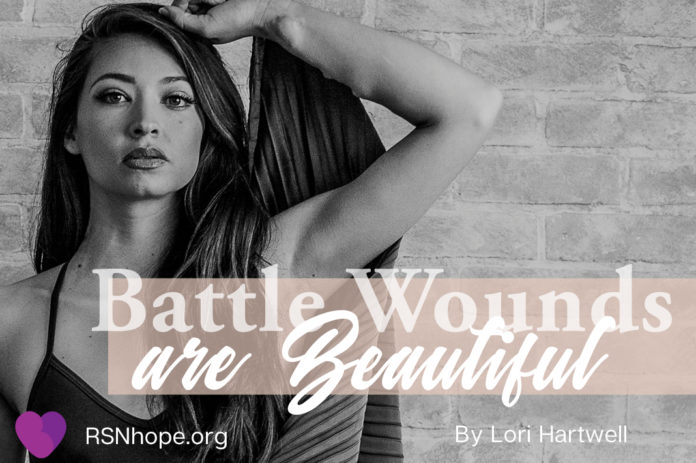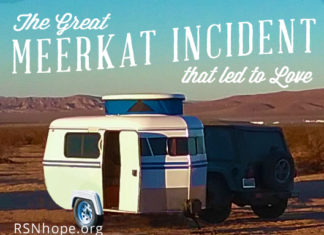
When you’re diagnosed with kidney disease you end up with a few battle scars. I’ve had more than 50 surgeries since being diagnosed in 1968 at the age of two. My life-saving surgeries turned into wounds that turned into scars, and more scars. That has made me tough, or shall I say, a warrior. Every part of my body retains a visible scar that provides a roadmap of my medical history and how I battled and won the fight with this illness.
When I was younger, I used to cover my scars to hide them. The right length of sleeve was required, and I didn’t dare show my tummy with its PD scars. I used Cinema Secrets make-up to ensure no one would see my healing wounds. After a hospital stay, my hands and arms, and sometimes my feet, would be riddled with bruises. I didn’t know my skin could turn so many shades of
the rainbow!
As I got a little older, I began to understand I was hiding a part of who I was. I came to realize I shouldn’t be ashamed of the battles I fought and won. My scars were my story of survival.
Scars are like battle wounds, they show what you’ve been through and how strong you are.
The dialysis fistula is the superior vascular access for hemodialysis treatments. It is created by a surgeon who ties a connection between an artery and a vein. The fistula causes pressure that allows extra blood to flow into the vein. To those of us who know the options for vascular access, or have a trained eye to recognize the tools needed to survive a long life on dialysis, a fistula is the most coveted tool used by warriors.
Over time, the fistula matures and grows larger. It can grow along the arm and become a bit lumpy, as in the case of beautiful Lili Lile (pictured on this page), but it provides easy, reliable access to the body’s blood at a reduced risk for infection, unlike a graft or a catheter.
The gorgeous photo of Lili reminds me of the beauty of our scars. Lili’s pose with her fistula front and center—her access to life-saving care—speaks volumes. She is a courageous warrior showing what she must do to survive. Her strength reflects hope and confidence, and her desire to live life to the fullest despite this illness.
In addition to being a sign of strength, a scar gives us an opportunity to share our stories with others. When I see a scar on someone, I ask them what happened. I have heard the most wonderful stories of surviving a war, overcoming an illness or a reckless act, or having an accident like slipping in the shower. I’ve yet to find someone who didn’t want to tell their story. They feel a bit surprised that someone would take the time to notice and care enough to ask.
I love the song, “Scars to Your Beautiful,” by Alessia Cara. This is my favorite verse:
“… And you don’t have to change a thing, the world could change its heart.
No scars to your beautiful, we’re stars and we’re beautiful …”
I hope this shift in perspective will allow you to see your scars in a different way. Scars are like battle wounds, they show what you’ve been through and how strong you are. They have a story to tell and it’s our job to embrace them and honor the journey they represent.
 Lori Hartwell is the Founder & President of Renal Support Network (RSN) and the host of KidneyTalk™, a radio podcast show. Lori was diagnosed with kidney disease at the age of two. In 1993 she founded RSN to instill “health, happiness and hope” into the lives of those affected by chronic kidney disease. Lori is also the author of the inspirational book Chronically Happy: Joyful Living in Spite of Chronic Illness and is a four-time kidney transplant recipient.
Lori Hartwell is the Founder & President of Renal Support Network (RSN) and the host of KidneyTalk™, a radio podcast show. Lori was diagnosed with kidney disease at the age of two. In 1993 she founded RSN to instill “health, happiness and hope” into the lives of those affected by chronic kidney disease. Lori is also the author of the inspirational book Chronically Happy: Joyful Living in Spite of Chronic Illness and is a four-time kidney transplant recipient.
Web ID 4024






